
FAQ on Cord Blood Banking
FAQ for Expectant Parents
With over 60,0001 cord blood transplants to date worldwide, cord blood is fast becoming a viable alternative for stem cell transplants in comparison with traditional bone marrow transplants. Plenty of promising research and active clinical trials are currently ongoing in the arena of stem cell transplants.
The FAQs below present most of the commonly asked questions have about cord blood banking and other related questions. Find out more about cord blood banking and how Cordlife can help play an important part to ensure holistic protection and assurance when it comes to protecting your child's health.
To view a topic, click on it and find the answer.
Don't see the answer to your question? Give us a call at our 24-Hour Hotline at (65) 6238 0808 or email us at info@cordlife.com
What is cord blood?
Cord blood is blood that remains in the umbilical cord following the birth of a baby and after the umbilical cord is cut. During pregnancy, the umbilical cord functions as a lifeline between mother and child. After a baby’s delivery, the cord blood present in the umbilical cord could offer hope for the child as well as members of the family. Cord blood contains a rich source of lifesaving stem cells called Haematopoietic Stem Cells (HSCs).
What are cord blood stem cells?
Cord blood stem cells are also known as Haematopoietic Stem Cells (HSCs), which are responsible for replenishing blood and regenerating the immune system. These stem cells can be found within the umbilical cord following the birth of a baby and have the unique ability to differentiate into various cell types found in blood as depicted in the diagram below:
- Red blood cells - which transport oxygen
- White blood cells - which produce antibodies and fight bacteria
- Platelets - which assist in blood clotting
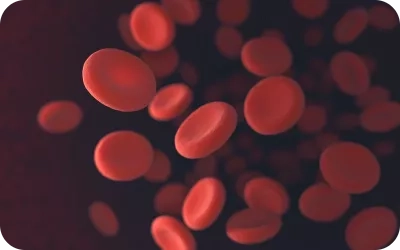
Carry oxygen to all cells in the bodyy
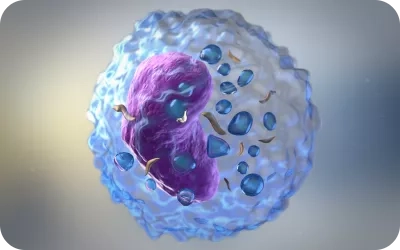
Fight infections
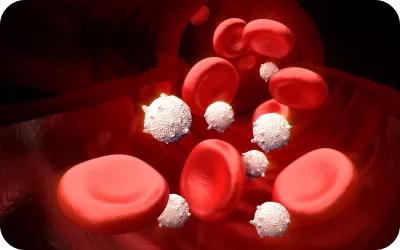
Helps blood to clot in the event of an injury
Why should I save my baby’s cord blood stem cells?
There are several advantages of storing your baby’s cord blood stem cells, such as:
- A guaranteed match for autologous transplants (where the donor and recipient are the same individual)
- Having a readily available supply of stored Haematopoietic Stem Cells (HSCs) as opposed to conducting a national or international search, which can be costly and time-consuming during a time-critical situation
- Lower risk of Graft vs. Host Disease (GvHD) for autologous transplants, a situation where the transplanted tissue attacks the patient’s own tissue
- Non-invasive collection procedure which is pain-free and risk-free to both mother and child
- Cord blood stem cells are younger, have a higher rate of engraftment and are more tolerant to tissue mismatches, compared to other sources of stem cells, e.g. bone marrow
Lower risk of Graft vs Host Disease (GvHD) after a stem cell transplant
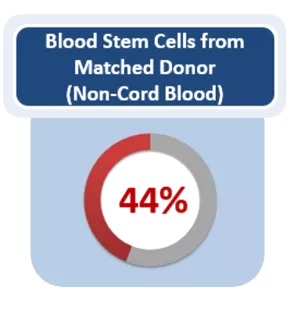
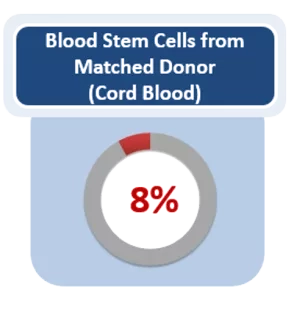
What can cord blood stem cells do?
Cord blood stem cells can:
- Replace and regenerate damaged or diseased bone marrow.
- Treat blood related cancers, solid tumours and immunodeficiency disorders.
- Correct genetic defects (sibling/allogeneic transplantation).
- Potentially be used for cellular therapy and regenerative medicine.erative medicine.
How does a cord blood stem cell transplant work?
The purpose of a stem cell treatment is to reconstitute a patient’s blood and immune system.
For example, in the case of a cancer-related transplant, chemotherapy and radiotherapy will have to take place before the infusion of cord blood stem cells. The cord blood stem cells will be infused intravenously into the patient’s blood stream, where they will migrate to the patient’s bone marrow. Haematopoietic Stem Cells (HSCs), which can be found in umbilical cord blood will differentiate itself into three blood cell types – red blood cells, white blood cells and platelets, a process which initiates the regeneration of the patient’s blood and immune system.
What are some of the diseases that can be treated using cord blood stem cells?
Cord blood stem cells are currently being used as a standard form of treatment for over 80 diseases such as leukaemia, lymphoma, thalassemia and neuroblastoma, just to name a few. For the full list of treatable diseases, click here.
How can the storage of cord blood stem cells benefit my family?
Apart from being a perfect match for your child, cord blood can also be used by family members. Unlike bone marrow which requires a perfect match between donor and patient, the probability of finding a match among family members using cord blood stem cells is higher. In addition, the chances of finding a suitable match within the family increases with the storage of every additional child’s cord blood2.
2 Parent’s Guide to Cord Blood FAQ. Parent’s Guide to Cord Blood Foundation website. https://parentsguidecordblood.org/en/faqs. Accessed November 11, 2019.
How is my baby's umbilical cord blood collected by my OBGYN?
Immediately after the delivery of your baby, your child’s umbilical cord will be clamped and cut, and your child will be moved to the birthing area. The doctor then collects the umbilical cord blood by inserting a needle into the umbilical vein, draining the cord blood into a blood bag.
This procedure is non-invasive in nature, and is both painless and risk-free to mother and child. The process takes about 3 minutes and does not alter the birthing process in any way. It can be done with either a vaginal or caesarean delivery.
Please note that the final decision of whether the cord blood collection should take place will always reside with your OBGYN or Doctor whose first priority is to ensure the safety of you and your baby.
What happens after my baby's umbilical cord blood has been collected?
After the collection of your baby’s umbilical cord blood, a round-the-clock medical courier will collect and deliver your baby’s cord blood unit to Cordlife’s stem cell processing and storage laboratory within 24 hours.
Upon receipt of your baby’s cord blood unit, a Cordlife laboratory technician will start to isolate the stem cells – a critical step in cord blood banking – which will determine the number of stem cells that can be harvested or recovered from the cord blood.
Cell recovery rates are critical because a higher number of stem cells could enhance the success of cord blood transplantation or treatment. That's why Cordlife invests in the advanced AXP® II system to harvest maximum stem cells for improved transplant or treatment outcomes.
The AXP® II system is a U.S. FDA-cleared device that is capable of recovering more than 97% of viable CD34+ stem cells, higher than other available processing systems.3 This safe, sterile and automated cord blood processing system also helps to ensure your baby’s cord blood is processed with highly precise, reliable, and state-of-the-art technology, hence eliminating any possible cross-contamination of the cord blood unit.
Once the stem cells have been isolated and stored in our connecting dual compartment cryobag, it is placed into a fully programmable and automated cryoprotectant infuser that allows for the consistent preparation of stem cells for cryopreservation. Unlike other devices that require manual handling, the infuser has high precision and is able to inject 0.5ml of cryoprotectant per minute at a constant flow rate and pre-defined temperature.
Advanced microstepping techniques are also employed to eliminate flow pulsation. Any deviation from this process may affect cell viability and potency. Therefore, automation with superior noise isolation and anti-vibration features helps to ensure that the cryoprotectant is homogeneously mixed with the cells to protect their viability and potency during cryopreservation.
3 Rubinstein P. Cord blood banking for clinical transplantation. Bone Marrow Transplantation. 2009;44(10):635-642. doi:10.1038/bmt.2009.281.
How is my baby's cord blood stored?
Your baby's umbilical cord blood is stored within a US FDA-approved cryogenic storage pouch made of a special material that is specifically designed to withstand cryogenic temperatures.
The pouch has two main segments (20% and 80%) that are attached integrally, and two test segments that are also integrally attached.
The integral segments allow for additional testing on the associated unit to ensure that no samples are mixed up and that the cord blood remains viable. These tests are typically performed prior to a transplant.
Having dual integrated segments addresses the possibility of future stem cell expansion. This means that when stem cell expansion is available commercially, you will be able to withdraw a portion of the stem cells for expansion while keeping the remainder in storage.
How long can my baby's umbilical cord blood stem cells be stored?
Research has shown that cord blood which has been processed according to international standards and stored at cryogenic temperatures can be stored indefinitely and still remain viable4.
4 Karlsson J, Toner M. Long-term storage of tissues by cryopreservation: critical issues. Biomaterials. 1996;17:243-256.
Can I store my baby's cord blood if my blood sample is tested positive for Hepatitis B?
You may still continue to store your baby's cord blood (with additional consent given to Cordlife), or elect to discard the umbilical cord blood unit.
This is because Cordlife conducts two different tests for Hepatitis B virus (HBV) on maternal blood, namely:
- Hepatitis B Surface Antigen (HBsAg)
- Hepatitis B Core Antibody (Anti-HBc (Total))
Usually, the attending transplant physician will make the decision whether to use an umbilical cord blood unit where the maternal blood was tested positive for Hepatitis B for transplant, based on various factors particular to the patient, the cord blood unit intended for use, and the availability of other HLA-matched donor.
How much does it cost to save my baby's cord blood?
Click here to find out more about our price plans. Alternatively, please call us at our 24-Hour Hotline (65) 6238 0808 or email info@cordlife.com for our latest price plans.
How do I enrol?
Contact us at our 24-Hour Hotline (65) 6238 0808 to make a non-obligatory appointment with our friendly Cord Blood Banking Consultants.
*If you are due within the next 4 - 6 weeks, we strongly recommend you to contact us immediately for enrolment because this will ensure all necessary steps are completed before your baby's arrival.
Reference:
1. Cord Blood Association. Cord Blood Editiorial Background and Fact Sheet. https://cord.memberclicks.net/assets/docs/Fact_Sheet.pdf. Published December 2021. Accessed December 12, 2023.
DCR No. 5001, Version C, September 2023
